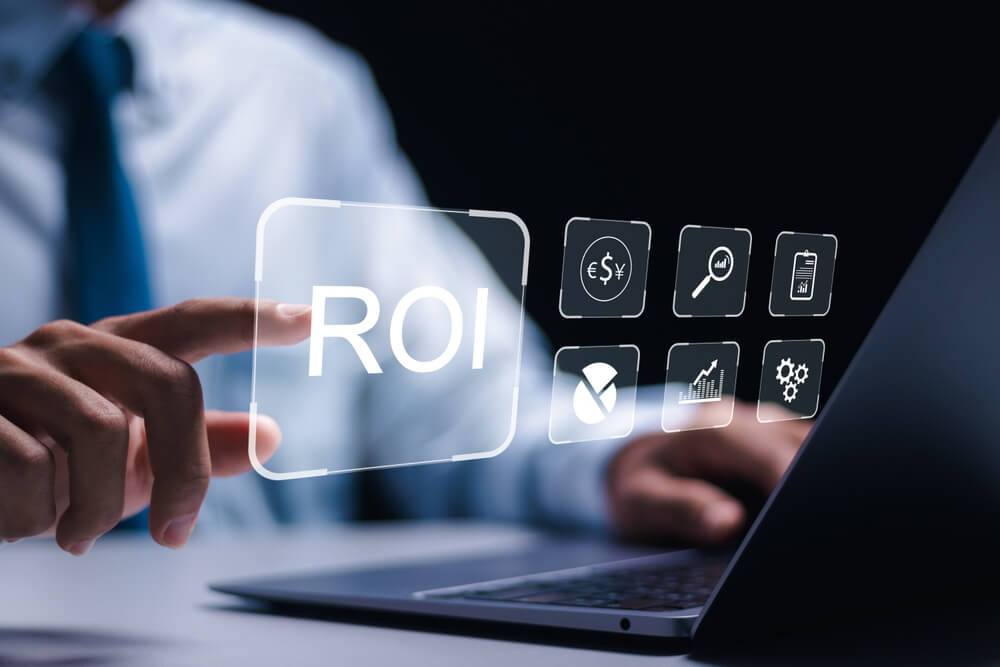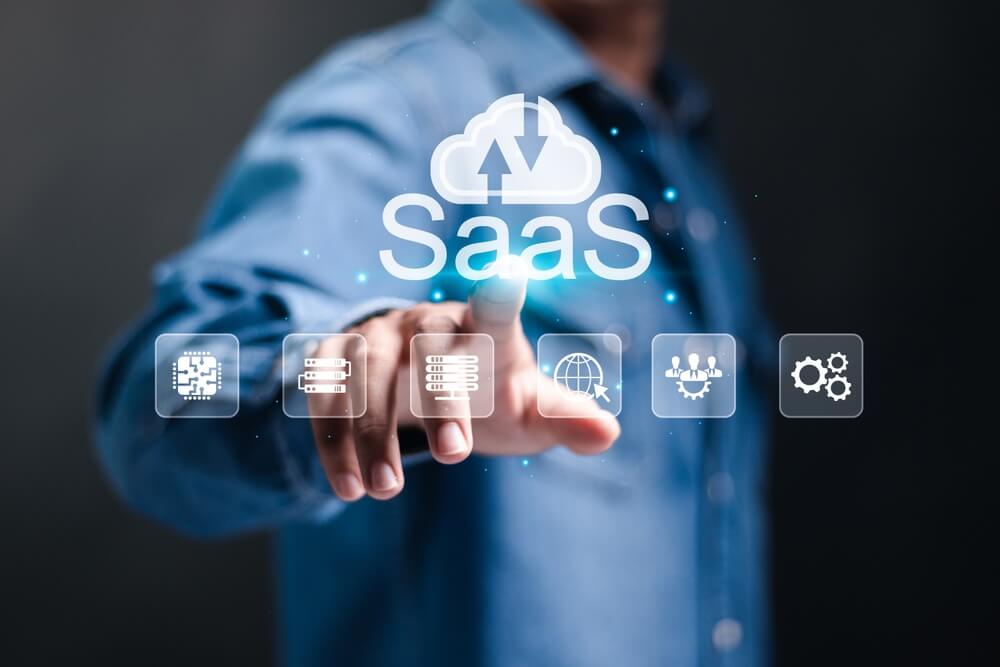
Skyrocket SaaS ROI: Insider Tips for Executives
In the competitive SaaS industry, effective marketing is crucial for enhancing ROI and profitability. Understanding and optimizing these strategies leads to sustainable growth and market dominance, making it essential for SaaS executives to focus on targeted marketing initiatives in this rapidly evolving sector.
Boost ROI with these expert SaaS marketing agency insider tips for executives. We highlight the following topics:
- Understanding ROI in SaaS.
- Using marketing strategies that scale.
- Creating campaigns that focus on ROI.
- Optimizing marketing campaigns through outsourcing.
Learn the top strategies for boosting ROI for SaaS companies. In addition, find out the fierce challenges of SaaS marketing, a guide that reveals how brands survive this competitive industry. Let’s go!
Want to know how we help SaaS businesses stand out from the crowd? Watch this video to learn how DAP makes it happen!
Understanding ROI in SaaS
ROI holds distinctive significance within SaaS business models due to their subscription-based nature. Unlike traditional products, SaaS operates on recurring revenue streams, making customer retention and lifetime value pivotal for ROI calculation.
For SaaS, ROI extends beyond initial customer acquisition costs, encompassing ongoing expenses and efforts to retain and upsell subscribers over time. Understanding ROI in SaaS involves evaluating short-term gains and the long-term impact of marketing, customer success, and product development efforts on sustained revenue and profitability.
The following are common hurdles that executives face in maximizing ROI for their SaaS solutions:
- Customer acquisition costs (CAC) vs. customer lifetime value (CLTV) imbalance. Balancing the high costs of acquiring customers with their long-term value is a persistent challenge. If the CAC outweighs the CLTV, it can hinder ROI.
- Churn and retention issues. SaaS companies might struggle with high churn rates due to competitive markets or inadequate customer success strategies. Retaining customers is essential for maximizing ROI, and reducing churn is crucial.
- Scaling infrastructure costs. As SaaS solutions grow, infrastructure costs escalate. Executives have to navigate this scalability without compromising service quality or inflating costs, impacting ROI.
- Market saturation and differentiation. In saturated markets, standing out becomes problematic. Executives struggle with maintaining a unique value proposition that resonates with customers, impacting acquisition and ROI.
- Ever-evolving technology and innovation. Staying abreast of technological advancements and innovating consistently is crucial. The inability to adapt or innovate swiftly might lead to outdated solutions, affecting the SaaS product’s market relevance and ROI.
Leveraging Marketing Strategies That Scale

Sophisticated marketing strategies profoundly impact SaaS ROI enhancements by boosting customer acquisition and retention. Critical targeted campaigns, especially for SaaS startups, use data-driven insights for more efficient customer acquisition, reducing acquisition costs, and increasing ROI.
Furthermore, nurturing existing customer relationships through personalized engagement and upselling initiatives increases the lifetime value of each customer, contributing significantly to enhanced ROI. The scalability inherent in these strategies allows SaaS companies to optimize their marketing efforts as they grow, ensuring a sustained positive influence on ROI over time.
Consider these marketing strategies and initiatives that scale along with relevant key performance indicators (KPIs).
1. Personalized Onboarding and Training Programs
Tailoring onboarding experiences to individual user needs can positively affect CLTV. When efficiently onboarded and trained in using the SaaS product, users tend to derive more value, leading to increased satisfaction and potentially higher CLTV. Additionally, well-trained users are less likely to churn as they understand the product's benefits and how to maximize its value.
2. Segmented Email Campaigns and Communication
Segmenting email campaigns based on user behavior or preferences may significantly reduce churn rates. By sending targeted, relevant content to specific segments such as feature updates, best practices, or personalized tips customers feel more engaged and valued, thus reducing the likelihood of churning.
3. Referral and Loyalty Programs
Referral and loyalty programs can boost CLTV and reduce churn rates. These incentivize customers to refer new ones, resulting in high-quality leads with lower acquisition costs. Referred customers have a higher CLTV due to established trust. Loyalty programs foster customer retention by rewarding long-term users and encouraging continued engagement as well.
4. Predictive Analytics for Proactive Support
Leveraging predictive analytics to foresee potential issues and offering proactive support could significantly reduce churn rates. By identifying patterns or behaviors that might indicate dissatisfaction or a tendency to churn, SaaS companies are able to intervene in a timely manner, addressing concerns and preventing customer attrition.
5. Tailored Upselling and Cross-Selling Campaigns
Targeted upselling or cross-selling campaigns based on user behavior or usage patterns can increase CLTV by suggesting features that work well together or higher-level plans that meet the needs of the customer. SaaS firms may increase revenue per customer while reducing churn by offering additional value that meets evolving requirements.
Crafting Campaigns Focused on ROI

Constructing high-ROI marketing campaigns in the SaaS industry requires a strategic approach aligned with the unique characteristics of subscription-based models. Here is a sample blueprint for executives:
1. Define Clear Objectives
Start by setting specific and measurable goals such as increasing trial sign-ups, reducing churn rates, or expanding market share. Align these objectives with ROI metrics to ensure a clear focus on measurable outcomes.
2. Perform Data-Driven Segmentation
Utilize data analytics to segment the audience based on behavior, preferences, and engagement levels. Segmentation enables targeted messaging that resonates with different user groups, optimizing campaign effectiveness.
3. Create Value-Centric Messaging
Craft compelling messaging that emphasizes the unique value proposition and benefits of the SaaS solution. Highlight how the product solves pain points, improves efficiency, or enhances outcomes for the target audience. Apply SaaS search engine optimization (SEO) strategies to enhance targeting and visibility in search results.
4. Develop Lifecycle Marketing Strategies
Develop campaigns tailored to different stages of the customer journey. Implement onboarding campaigns to drive activation, nurture campaigns to maintain engagement, and re-engage campaigns to win back inactive users, focusing on maximizing CLTV.
5. Provide Personalization and Automation
Leverage automation tools to personalize communication and user experiences. Use personalized emails, in-app messages, and targeted ads to deliver relevant content and offers based on user behavior, increasing conversion rates and reducing churn.
6. Perform A/B Testing and Iteration
Continuously test different elements of campaigns such as messaging, visuals, calls to action (CTAs), and timing to identify what resonates best with the audience. Use A/B testing insights to iterate and optimize campaigns for maximum ROI.
7. Focus on Customer Success
Integrate customer success initiatives within marketing campaigns. Educate users about product features, offer resources, and provide exceptional support to enhance satisfaction, driving higher CLTV and lower churn rates.
8. Track and Analyze Metrics
Implement robust analytics to track campaign performance against ROI metrics. Monitor metrics such as CAC, CLTV, churn rates, conversion rates, and revenue attribution to gauge campaign success and refine strategies as needed.
9. Ensure Adaptability and Flexibility
Stay agile and adaptable in response to market shifts, technological advancements, and evolving customer needs. Modify campaigns swiftly based on real-time data and feedback to maintain relevance and maximize ROI.
10. Evaluate Post-Campaign
Conduct thorough post-campaign evaluations to assess the actual ROI achieved against the initial objectives. Analyze successes, areas for improvement, and key learnings to refine future campaigns and strategies.
By following this blueprint, SaaS executives can design and execute marketing campaigns that drive immediate results and deliver sustained, high-return outcomes, contributing to the company's growth and success.
Optimizing through Expertise: "The Outsourcing Advantage"
Achieving and sustaining high ROI demands multifaceted marketing, technology, and customer success expertise. Outsourcing to a SaaS marketing agency provides access to specialized skills and resources, alleviating the complexities of maintaining an in-house team.
By leveraging external expertise, SaaS companies can streamline operations, reduce costs, and expedite innovation, enabling a more focused approach to maximizing ROI without spreading internal resources too thin.
Here are the advantages of using external expertise to access cutting-edge marketing technology and insights:
- Access to specialized skills and tools. External expertise grants access to specialized skill sets and advanced marketing technologies that might not be readily available in-house. These include expertise in data analytics, AI-driven marketing tools, and innovative platforms.
- Faster implementation of new technologies. External experts stay abreast of the latest marketing trends and technologies. Leveraging their insights allows quicker adoption and implementation of cutting-edge tools, making sure that SaaS companies remain competitive.
- Cost efficiency and scalability. Outsourcing marketing expertise might be more cost-effective than hiring and training an in-house team. External partners can offer scalable solutions, allowing SaaS companies to adjust resources according to their changing needs without enduring fixed overhead costs.
- Diverse perspectives and experience. External experts bring diverse industry experiences and perspectives, offering fresh insights and unconventional approaches to marketing challenges. This diverse knowledge pool leads to innovative campaigns and strategies that significantly affect ROI.
- Focus on core competencies. SaaS companies are able to focus on their core competencies and strategic initiatives. Delegating marketing tasks to an external SaaS marketing agency frees up internal resources, enabling the company to concentrate on product development, customer service, and other critical aspects of the business.
Summing Up
Strategic marketing drives substantial ROI growth within SaaS businesses. It promotes heightened customer acquisition, retention, and upselling, impacting revenue streams and long-term profitability.
Executives should align their current marketing strategies with the company's growth objectives, considering the untapped potential in refining targeting, personalization, and leveraging cutting-edge tools. Optimizing marketing strategies can boost ROI, positioning the company for sustained success in an increasingly competitive SaaS industry.
Is your current marketing investment merely a cost, or is it a revenue-generating engine ready to receive a boost from the right partner? Team up with an expert SaaS marketing company today. Contact Digital Authority Partners (DAP) today.
Want To Meet Our Expert Team?
Book a meeting directly here




